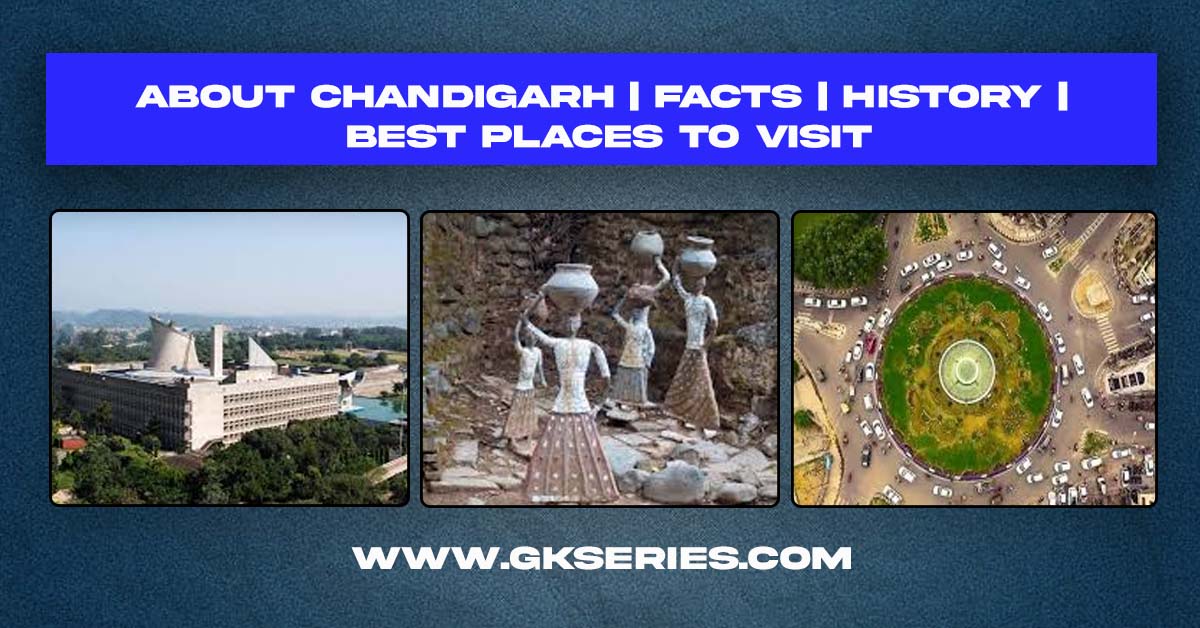
In this article, we provide comprehensive information about the geography, history, population, and top tourist destinations of Chandigarh. Chandigarh, often referred to as “The City Beautiful,” is a unique city in northern India, serving as the capital of both Punjab and Haryana while being a Union Territory in itself. The city is a blend of nature and architecture, featuring iconic landmarks like the Capitol Complex (a UNESCO World Heritage Site), Sukhna Lake, and the Rock Garden, which showcases sculptures made from industrial and urban waste.
| About: | Chandigarh, the dream city of India’s first Prime Minister, Sh. Jawahar Lal Nehru, was planned by the famous French architect Le Corbusier. Picturesquely located at the foothills of Shivaliks, it is known as one of the best experiments in urban planning and modern architecture in the twentieth century in India. Chandigarh derives its name from the temple of “Chandi Mandir” located in the vicinity of the site selected for the city. The deity ‘Chandi’, the goddess of power and a fort of ‘garh’ laying beyond the temple gave the city its name “Chandigarh-The City Beautiful”. Chandigarh has a rich pre-historic background. The gently sloping plains where the city now lies were once a vast lake surrounded by marshland. Fossil discoveries in the area reveal a diverse range of aquatic and amphibian life that thrived in that environment. Approximately 8000 years ago, this region was also inhabited by the Harappans. From the medieval period to modern times, the area was part of the prosperous Punjab Province, which was split into East and West Punjab during the 1947 partition. The city was intended not only to be the capital of East Punjab but also to provide a new home for thousands of refugees displaced from West Punjab. In March 1948, the Punjab Government, in collaboration with the Government of India, designated the foothills of the Shivaliks as the site for the new capital. This location was part of the former Ambala district, as noted in the 1892-93 gazetteer. The foundation stone for the city was laid in 1952. Later, when the state was reorganized on November 1, 1966, into Punjab, Haryana, and Himachal Pradesh, Chandigarh gained the unique status of being the capital for both Punjab and Haryana, while also being declared a Union Territory under the direct control of the Central Government. |
| Country : | India |
| Language: | Official: English |
| Capital: | Chandigarh |
| GDP: | ₹0.49 trillion (US$6 billion) (2023-24) |
| Area | 114 sq kms |
| Longitude | 760 47′ 14E |
| Latitude | 300 44′ 14N |
| Altitude | 304-365 meters above MSL with 1% drainage gradient |
| Annual Rainfall (2016) | 910 mm |
| Monsoon | July-September |
| Temperature | Winter Min. (Nov.-Jan, 2016) 20C – 100 C Summer Max. (April-July, 2004) 380C – 430C |
| Prevalent Winds | From the North West to South East in Winter and reverse in Summer |
| Total Population (2011 census) | 1,055,45 |
| Density of population/sq. km. | 9,258 |
| Birth Rate (per 1000) | 11.95 (2016) |
| Death Rate (per 1000) | 2.65 (2016) |
| Infant Mortality Rate (per 1000) | 7.96 (2016) |
| Sex Ratio (females per 1000 males) | 818 |
| Decennial Population Growth | 17.19% |
| Literacy Rate | 86.0% |
| Geology | The Union Territory of Chandigarh is located in the foothills of the Shivalik hill ranges in the north, which form a part of the fragile Himalayan ecosystem. It is occupied by Kandi (Bhabhar) in the north east and Sirowal (Tarai) and alluvial plains in the remaining part. The subsurface formation comprises of beds of boulders, pebbles, gravel, sand, silt, clays and some kankar. The area is drained by two seasonal rivulets viz. Sukhna Choe in the east and Patiala-Ki-Rao Choe in the west. The central part forms a surface water divide and has two minor streams. The stream passing through the central part is called N-Choe and the other is Choe Nala which initiates at Sector 29. |
| Major Attractions to Visit: | Leisure Valley: A continuum of various theme gardens to take care of the body and spirit of the city. Le Corbusier retained… Rose Garden: Zakir Hussain Rose Garden, is a botanical garden in Chandigarh, India and spread over 30 acres of land, with 50,000… Sukhna Lake: Sukhna Lake in Chandigarh, India, is a reservoir at the foothills (Shivalik hills) of the Himalayas. This 3 km² rainfed… Rock Garden: The Rock Garden of Chandigarh is a sculpture garden in Chandigarh, India. It is also known as Nek Chand’s Rock… |





